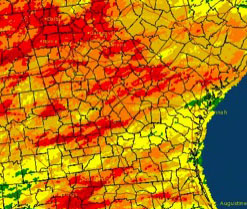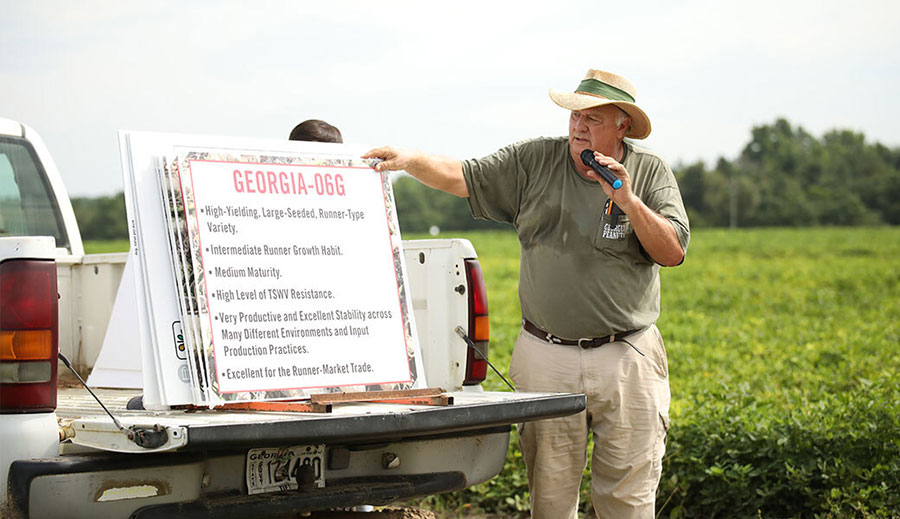Temperatures were 4 to 7 degrees below normal across the state during March, and snow was even seen in a few places south of Atlanta. In many parts of the state, March was colder than January, causing some problems for Georgia crops and farmers.
The cold conditions damaged some watermelon seedlings and delayed planting in some fields. Field corn was damaged by frost in some areas, and the cold and wet conditions also delayed the harvesting of Vidalia onions. It also slowed the ripening of blueberries in southern Georgia, and there was some isolated hail damage on March 30-31, but no significant losses were reported.
It was the 10th coldest March in 66 years in Columbus, the seventh coldest in Macon in 121 years and the fifth coldest in Savannah in 143 years of record.
Athens set a record low temperature of 27 degrees Fahrenheit on March 28, breaking the old record of 28 degrees set in 1913. Macon tied their record low of 30 degrees on March 28, and Savannah tied their record low of 34 degrees on March 26.
In addition to the broken records, many cities saw average temperatures that were 4 to 5 degrees cooler than usual.
In Atlanta, the monthly average temperature was 49.1 degrees F (5.2 degrees below normal). In Athens the average was 48.9 degrees (5.4 degrees below normal). In Columbus the average was 53.7 degrees (4.1 degrees below normal). In Macon it was 50.7 degrees (6.1 degrees below normal). In Savannah it was 53.8 degrees (5.4 degrees below normal).
For the most part, the state saw less rainfall than it did in February. However, with the wet conditions in February and the normal rainfall in March, severe drought was eliminated from the state. Only 16 percent of the state was experiencing any level of drought by March 31.
The highest monthly total precipitation reported by a National Weather Service station was the 4.58 inches observed in Atlanta (0.23 inches below normal) and the lowest was the station in Savannah with 2.02 inches (1.71 inches below normal). Athens received 4.35 inches (0.08 below normal). Macon received 3.79 inches (0.76 below normal). Brunswick received 2.11 inches (1.77 below normal). Columbus received 3.34 inches (2.12 below normal). Alma received 2.29 inches (2.46 below normal). Augusta received 3.11 inches (1.07 inches below normal).
The highest single-day rainfall from Community Collaborative Rain Hail Snow Network stations was 4.8 inches on March 24 near Valdosta in Lowndes County. Another observer near Valdosta reported 4.69 inches on March 25. The highest total rainfall observed in March was 6.45 inches, near Thomasville in Thomas County, followed by 6.29 inches measured near Flowery Branch in Hall County.
In Atlanta, the chilly weather turned some of the city’s rainfall into snow. A trace of snow was reported on both March 3 and March 26, breaking the old records of no snow on those dates.
Snow flurries were reported as far south as southern Fayette County in March. Dillard, in Rabun County, received 2 inches of snow on March 2. Several stations in Fannin County reported 1 inch on the same date.
Severe weather was reported on five days during March. One EF1 tornado was observed near Gibson in Glascock County on March 5. Two tornadoes were observed on March 18 as part of the widespread storm that that brought large hail to several locations in north Georgia. Several observers reported hail falling for more than 10 minutes and covering the ground in Carroll, Douglas and Putman County.
The two tornadoes were an EF2 tornado, which passed from Meriweather to Pike County, and an EF1 tornado, which was observed 12 miles southeast of Waynesboro, in Burke County. These tornadoes were produced by the same supercell thunderstorm as it traveled through the area. Hail damage to car windshields was reported on I-85 in Clayton County near the Atlanta airport.










